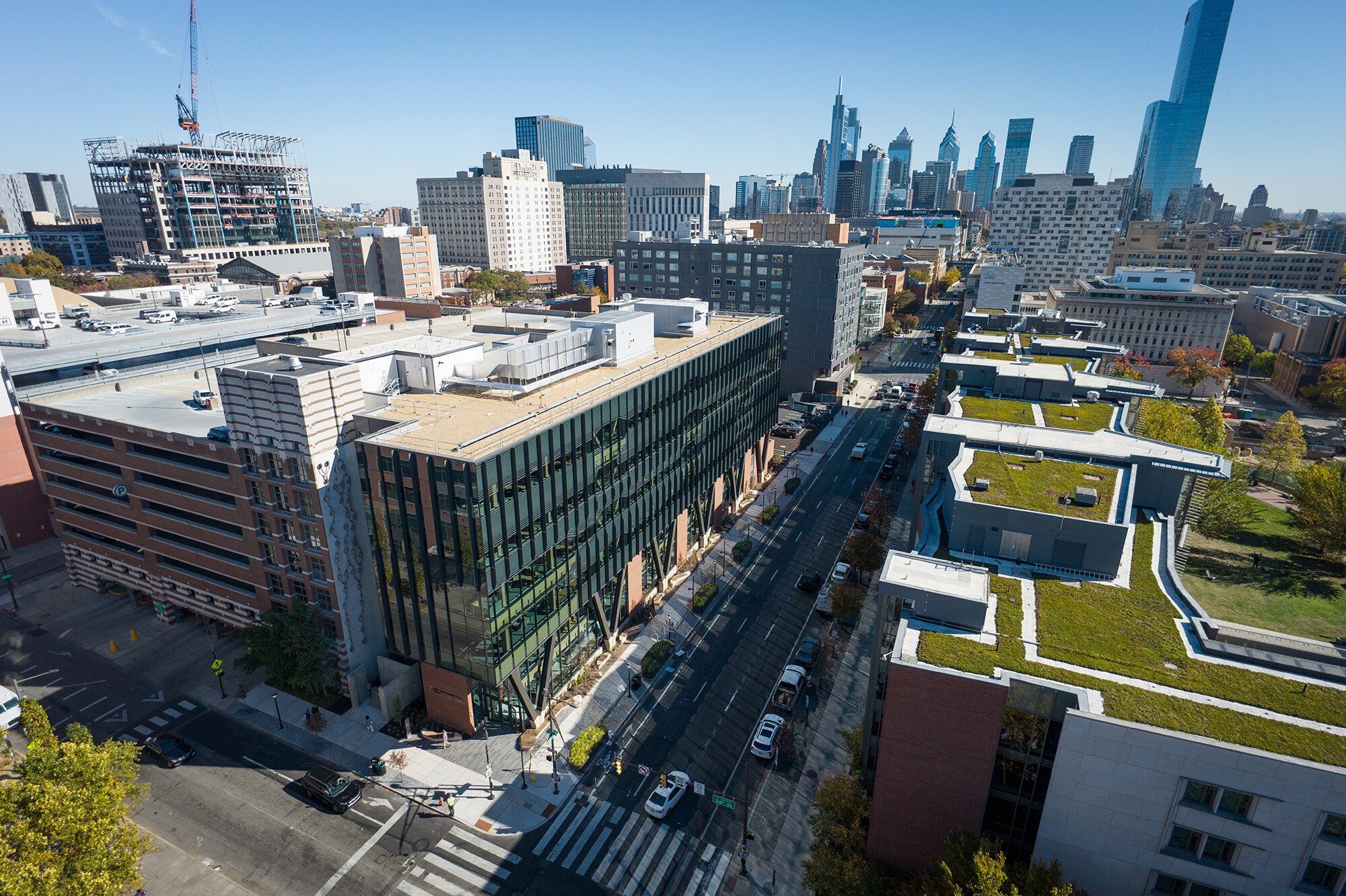
(From left) Doctoral student Hannah Yamagata, research assistant professor Kushol Gupta, and postdoctoral fellow Marshall Padilla holding 3D-printed models of nanoparticles.
(Image: Bella Ciervo)
4 min. read

The Penn Advanced Research Computing Center (PARCC), in collaboration with Penn Information Systems & Computing, is soft launching in May with a group of 30 faculty members. The platform will double the University’s compute capacity and be available to faculty across campus. The launch marks a major milestone in the advancement of In Principle and Practice, Penn’s strategic framework, and its principles of interdisciplinary scholarship.
“PARCC will enable our scholars to make transformative advances that will define the future of their disciplines—from health care to climate change, business to social media, and most importantly, to contribute to the advancement of interdisciplinary knowledge and education of our students,” says Senior Vice Provost for Research Dawn Bonnell.
The project first gained traction about a year ago, says Kenneth Chaney, PARCC associate director of AI and technology, after faculty began talking with administrators about how to reduce barriers of access for high-performance computing (HPC) and AI needs. The result, less than a year after those conversations, is a brand-new offsite data center with clusters that support general research computing and can scale the number of experiments at Penn.
“The most exciting thing about PARCC is that every school is going to have access to this—it doesn’t matter if you’re from a large school or a small one, you’re going to have access to a tool that enables low- or no-code solutions, so you don’t have to spend all your time training a model,” says Chaney, who is also an adjunct professor in the School of Engineering and Applied Science. “We’ll be able to host something [so that] we aren’t worried about these resources or data leaving Penn’s [equipment].”
Chaney is optimistic that the seamlessness of PARCC will encourage new disciplines to experiment with AI. For example, he says, a history researcher might be able to scan a French textbook from more than a century ago and receive a PDF scan, translation, and summary— all within minutes and without ever having to leave Penn. Faculty already working with large data sets, meanwhile, will have new possibilities for what they can do and experience a seamless transition from what they currently use.
Dawn Augustino, IT technical director in Information Systems & Computing (ISC), credits a spirit of togetherness that allowed the project to quickly come together. The Office of the Vice Provost for Research (OVPR) and faculty leadership leveraged an existing team of Penn talent from ISC—who had backgrounds in enterprise-level work—to go from recommendations to signed contracts within nine months.
“It’s because we partnered and did it together for Penn, as Penn, that we were able to accelerate the timelines,” says Augustino, who co-led the effort from vendor selection through implementation.
“We were able to bring our best talents and people to the table to contribute in a way that is unique to the value that ISC brings to Penn, and it really enabled us to get to know some of our peers in schools and centers better, and to get to know some faculty and administrators,” says Tiffany Hanulec, executive director of technology services and chief technology officer.
Hanulec says they also collaborated with engaged faculty from various schools, several of whom later became members of the Penn AI Council.
A group of faculty members have been selected to use the software and hardware first, transitioning their research to PARCC with what Augustino describes as the “latest and greatest from NVIDIA.”
“Some of the calculations they want to do, they can’t do right now because they don’t have enough ‘power,’” says Augustino. “Now, they’ll have a big enough engine to put toward their work. It will accelerate their research in ways they haven’t been able to do before, and in ways their peers aren’t doing.”
New to Penn is Jaime Combariza, director of PARCC, who led an advanced research computing initiative at Johns Hopkins for 11 years and was an associate research professor. Combariza, who began his role in April, will oversee the initial testing and benchmarking for PARCC, ensure the hardware and software continues to meet the long-term needs of the nearly 5,000 faculty on campus, and will implement support services for users.
“I like challenges, and this was an attractive situation,” says Combariza. “I know faculty are very excited about PARCC, with many unknowns—but I like that, and I like to deliver.”
Combariza says Penn’s data center will be in line with some of the Top500 data centers in the world, with 240 new GPUs that are collocated, centralizing research computing at Penn for the first time.
While some researchers will want to continue to store data locally, Combariza notes that faculty will be able to easily collaborate on the platform. “Hopefully they will find that a shared, more powerful compute system offers greater opportunities to advance research [and see] that’s the right way to go.”
In the coming weeks, Combariza will meet with faculty who are already doing a lot of computing to test and further develop tools to enhance the experience. System administration, he says, will initially be handled by a third party, but will eventually consist of an internal team at Penn.
“This is an exciting time, and I’m excited about running this center,” Combariza says. “It’s going to be a challenge, but we’re prepared for that.”
Interested faculty can sign up to stay informed through the PARCC Mailing List.

(From left) Doctoral student Hannah Yamagata, research assistant professor Kushol Gupta, and postdoctoral fellow Marshall Padilla holding 3D-printed models of nanoparticles.
(Image: Bella Ciervo)

Jin Liu, Penn’s newest economics faculty member, specializes in international trade.
nocred

nocred

nocred